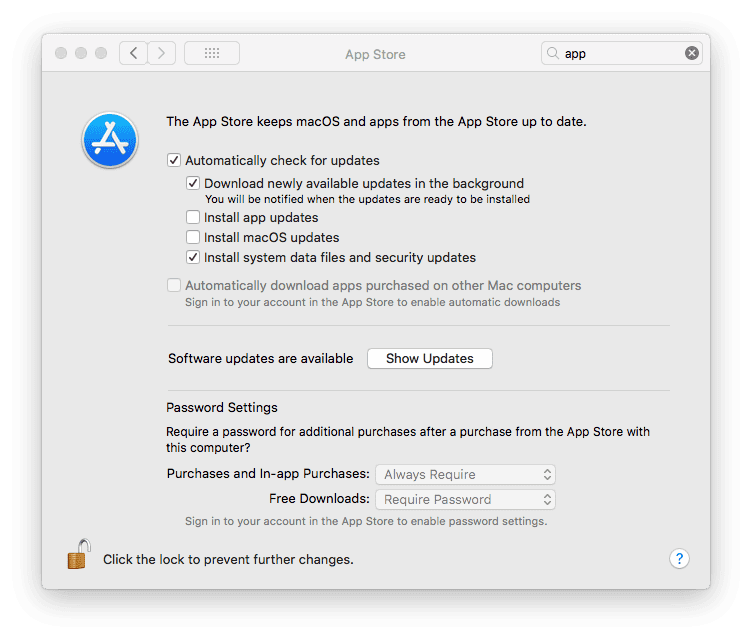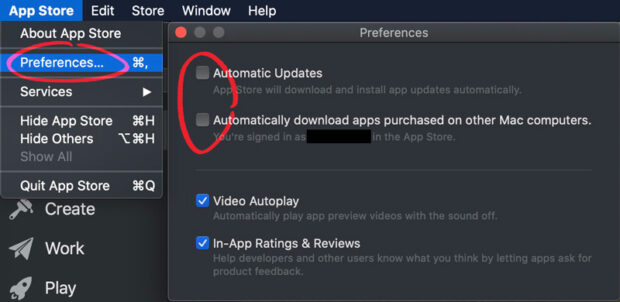I don’t like Firefox constantly updating the version or the Add-ons all by itself at startup without my knowledge. You can enable or disable automatic updates in Firefox with these steps.

Periodically, Apple releases updates to your macOS software (which can include updates to apps that come with your Mac and important security updates). If you receive a notification that software updates are available, you can choose when to install the updates, or choose to be reminded the next day. Apple has released macOS Catalina 10.15.7, a minor update that fixes a few bugs in macOS, including an issue with automatic Wi-Fi connections, one that could prevent files from syncing with iCloud Drive, and a graphics problem with the Radeon Pro 5700 XT in the most recent 27-inch iMacs.
Macos Disable Automatic Updates
From Firefox Menus
- Select the “Menu” button in the upper-right corner, then choose “Options“.
- Select “General” on the left pane.
- Scroll down to the “Firefox Updates” section.
- Select one of the following options as desired:
- Automatically install updates
- Check for updates, but let me choose whether to install them
- Never check for updates
- Check or uncheck the “Use a background service to install updates” option as desired.
From about:config Menu

- Type “about:config” in the address bar, then press “Enter“.
- Search for the “app.update.auto” setting.
- Double-click the “app.update.auto” option to toggle the setting. If set to “true“, automatic updates are enabled. If set to “false“, automatic updates are disabled.
Via prefs.js file
- Close Firefox.
- Navigate to the following location based on your operating system.
- Windows XP/Vista/7/8/10 – “%APPDATA%MozillaFirefox“
- Unix/Linux – “~/.mozilla/“
- Mac OS X – “~/Library/Mozilla/” or “~/Library/Application Support/“
- Open the “Profiles” folder.
- Open the folder that represents the profile you would like to edit. The name of the folder will vary. It is usually a bunch of characters, followed by “.default”.
- Open the prefs.js file with a text editor like Notepad.
- Look for a line that contains
app.update.enabled. If it doesn’t exist, add a line for it in the file and set it as desired using these examples:user_pref('app.update.enabled', true);= Automatic updates enableduser_pref('app.update.enabled', false);= Automatic updates disabled
Use Software Update


- Choose System Preferences from the Apple menu , then click Software Update to check for updates.
- If any updates are available, click the Update Now button to install them. Or click “More info” to see details about each update and select specific updates to install. You might be asked to enter your administrator password.
- When Software Update says that your Mac is up to date, the installed version of macOS and all of its apps are also up to date. That includes Safari, Music, Photos, Books, Messages, Mail, Calendar, and FaceTime.
- To automatically install future updates, including for apps that you got from the App Store, select “Automatically keep my Mac up to date.” Your Mac will notify you when updates require it to restart, so you can always choose to install those later.
Macos Automatic Updates Latest
Update the software on your iPhone, iPad, or iPod touch
Learn how to update your iPhone, iPad, or iPod touch to the latest version of iOS or iPadOS.
Learn more
Macos App Store Automatic Updates
- Learn how to get updates for earlier versions of macOS that don't include Software Update preferences.
- You can also use the App Store to update apps or redownload apps that came from the App Store.
- Learn which macOS your Mac is using and how to upgrade to the latest macOS.
- When your Mac is connected to a Personal Hotspot, large updates don't download automatically.

